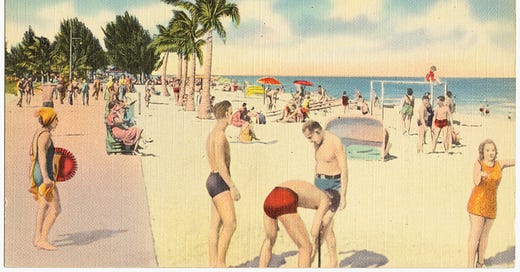Two completely-new web pages about using industrial-strength lights to chase away the winter blahs.
That has been a radical improvement in my life. Prior to working this out, I could barely function from November through January. I'm not the only one; other people who have tried the approach report similar dramatic results.
Maybe it will work for you, too! I want to raise awareness of the possibility, and give you the information you need to act on it if it seems like it might be relevant for you.
YOU NEED MORE LUX explains what bright light supplementation can do for your mood and productivity; how it works, including some fascinating recent biological research; how to make it work for you in practice; why you probably don’t want to get a “light therapy lamp” (they are underpowered and overpriced); and which one to get if you insist on one.
Seriously bright light vs. winter blahs describes various sorts of industrial lighting, how to use them in practice, and how to shop for specific products.
The medical profession calls severe winter blahs seasonal affective disorder (SAD) and recommends bright light therapy. Officially, to count as SAD, you have to meet the criteria for “major depressive disorder,” which is quite bad.
These medical terms may obscure mild to moderate winter blahs, which are much more common. Far more people experience some slow-down than severe depression. For many, it may not be an “affective” (mood) thing at all. Most would rightly refuse to admit having a “mental disorder” which needs medical treatment with some sort of “therapy,” especially one that sounds suspiciously like holistic quackery.
Taking a supplement, though, seems natural. Most of us don’t get enough magnesium in our diets, so taking magnesium supplements is sensible. Maybe most Americans and Europeans don’t get enough light in winter. So, taking a supplement seems sensible.
All the text in these pages is completely new. However, I’ve recycled the URLs from two I wrote in 2015 and in 2016 on the same topic. Those had become hopelessly obsolete, because LED lighting technology improves considerably every year.
Also, they were quite off-hand: Hey, look at this cool thing I made! Whoa, here’s another one! Despite that, they became widely referenced resources for bright light supplementation. I felt increasingly uneasy about this, because I’m no expert, and had done nearly no reading about it. I felt irresponsible, because readers took them more seriously than it seemed they deserved.
For the new pages, I’ve spent many full-time days reading the scientific literature, looking into different sorts of industrial lights, and buying and trying several I hadn't before. That doesn’t make me an expert, and also the science doesn’t address many key questions. Still, I have more confidence in my explanations and recommendations.
I’ve mostly left the academic citations out, but I’d be happy to supply references if you’d like to read more detail. You can also ask questions in a comment on the page so other people would get the benefit of my reply too!






Hello, Mr. Chapman. I'm a journalist at the Toronto Star and I'm looking to write an article about lighting, SAD and the winter blahs. Would you be amenable to being interviewed? I'm at garnet@thestar.ca; thanks for your time.